Sketch Design
Course Duration: 3 months
Internship: 2 months
The Sketch Design Masterclass is a comprehensive course tailored for individuals aspiring to master the Sketch design tool. From the fundamentals of interface design to advanced techniques for creating stunning visuals, this course covers everything you need to become proficient in Sketch and unleash your creativity.
Inquiry form
In This Course You Will Get
- Daily 2 Hrs Practical Training (Offline)
- Project Assignments
- Freelancing and Business
- Start-up training
- Interview & Personality Training
- Internship Facilities 100% Job Placement Guarantee
Course Modules
This refers to the initial sketching or drawing of a garment design. It involves outlining the basic structure and elements of the garment before proceeding to the detailed design phase.
In garment design and stitching, a “run” typically refers to a line of stitches or decorative stitching on the fabric. The type of run can vary based on the desired effect, such as straight stitch, zigzag stitch, or decorative embroidery stitches.
Stitching plays a crucial role in garment construction, and there are various types of stitches used for different purposes. Common types of stitches include straight stitch, zigzag stitch, overlock stitch, and decorative stitches like embroidery stitches.
This term refers to the placement or arrangement of design elements, such as patterns, motifs, or embellishments, within specific areas of a garment. Area setting ensures visual balance and cohesion in the overall design.
These terms are commonly used in traditional Indian saree design. The “pallu” refers to the decorative end piece of the saree that drapes over the shoulder. “C Pallu” refers to a specific style of draping the pallu, while “skirt” refers to the lower portion of the saree.
Lace is a delicate fabric often used as trim or embellishment on garments like blouses (upper garment) and kali (panels) in traditional Indian attire such as sarees or lehengas.
These terms are also commonly used in traditional Indian attire. A “dupatta” is a long scarf or shawl worn with outfits like salwar kameez or lehengas. “Top” refers to the upper garment, while “bottom” refers to the lower garment, typically worn with the dupatta.
This refers to a design pattern or motif that covers the entire surface area of the fabric. All-over designs are commonly used in textiles and garments to create visually striking and cohesive aesthetics.
This term indicates a design or embroidery technique involving multiple sequences or layers of stitches to create intricate patterns or textures with depth and dimension.
These are types of embellishments commonly used in garment design. “Cording” involves attaching thin cords or ropes to the fabric to create raised designs or patterns, while “chain” refers to chain stitch embroidery, where loops of thread are linked together to form a chain-like pattern.
Lace trim or edging specifically designed for sarees, often used to embellish the borders or pallu of the saree.
These terms represent different types of fabric-based products. “Garment” refers to clothing items worn on the body, while “curtain” refers to fabric panels used for window coverings or room dividers.
